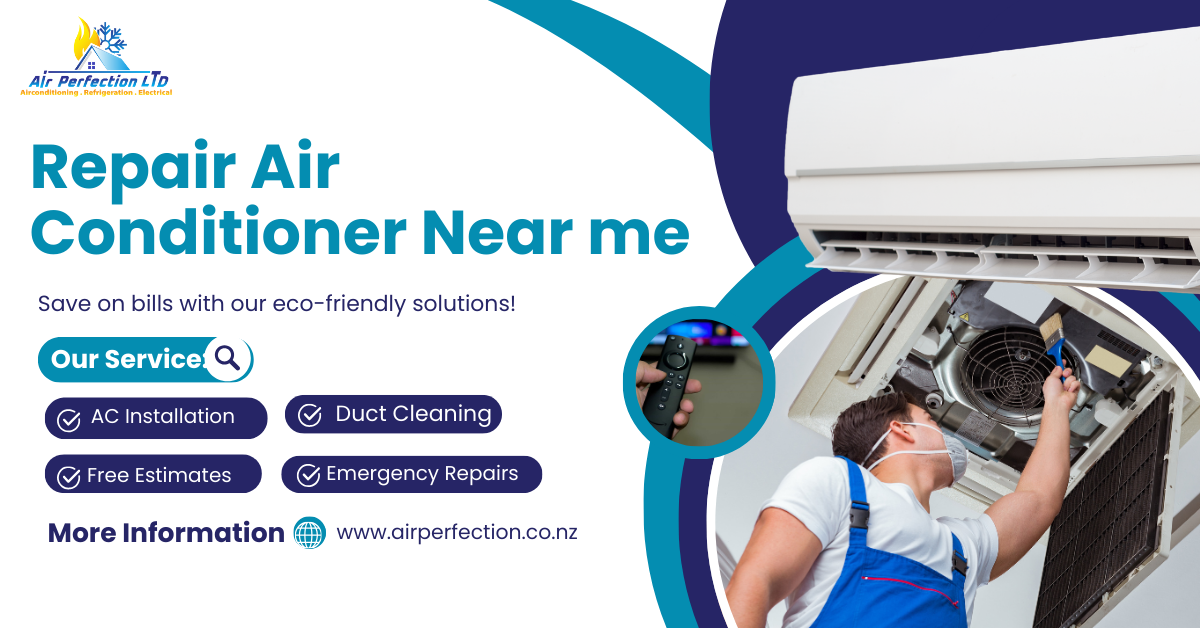Air conditioning has become a vital part of life in many New Zealand homes, especially during the hotter summer months. However, the cost of running an air conditioner can be significant, making it essential to understand the factors that influence these costs and how to manage them effectively. Several factors influence the cost of running an air conditioner, ranging from the type and size of the unit to local electricity rates and usage patterns. Without a clear understanding of these factors, homeowners may find themselves facing unexpectedly high energy bills.
This comprehensive guide explores the factors affecting air conditioning costs, how to calculate these costs accurately, and actionable tips to help you save money while keeping your home cool and comfortable. By the end of this guide, you will have a thorough understanding of how to manage your air conditioning expenses effectively, ensuring you enjoy the benefits of a cool home without breaking the bank.
Factors Affecting Air Conditioning Costs in New Zealand
Type of Air Conditioner
Different types of air conditioners have varying running costs, each suitable for different scenarios and spaces.
- Window Units: Relatively inexpensive to purchase and install. Ideal for small spaces like bedrooms or small living areas but may not be as energy-efficient as other types.
- Split Systems: Comprising an indoor and an outdoor unit, popular for their energy efficiency and ability to cool larger areas. Better performance than window units and is quieter, though with higher installation costs.
- Central Air Systems: Cool entire homes through a network of ducts. Provide comprehensive cooling but consume more energy due to the large area they cover, leading to higher running costs.
- Portable Units: Offer flexibility as they can be moved from room to room. Usually less efficient than window or split systems, best for occasional use.
Also Helpful: What Is the Best Air Conditioning Unit?
Energy Efficiency Rating (EER/SEER)
Energy efficiency is a crucial factor affecting running costs. The Energy Efficiency Ratio (EER) and Seasonal Energy Efficiency Ratio (SEER) are key metrics for assessing an air conditioner’s efficiency.
- EER: Measures the cooling capacity (in BTUs) per watt of power consumed. A higher EER indicates better efficiency.
- SEER: Measures efficiency over a typical cooling season. Higher SEER ratings translate to lower running costs.
Importance of High Ratings
Choosing air conditioners with higher EER or SEER ratings can lead to significant cost savings. Although units with higher ratings may have a higher upfront cost, the reduction in energy consumption can offset this over the unit’s lifespan.
Size and Capacity
The size and capacity of the air conditioning unit directly affect running costs. Properly sizing the unit to match the space it cools is crucial for efficiency.
- Matching Unit Size to Space: An appropriately sized unit will operate efficiently. An undersized unit will struggle to cool the area, running longer and using more energy, while an oversized unit will cycle on and off too frequently, leading to inefficiency and higher costs.
- Calculating the Right Size: Consider the room’s square footage, ceiling height, insulation, and window size. Professionals use these factors to recommend the ideal capacity.
Usage Patterns
Usage patterns significantly impact air conditioning costs. The duration and frequency of use, as well as the temperature settings, play a crucial role.
- Duration of Use: Longer running times naturally lead to higher energy consumption. Balancing comfort and cost involves using the air conditioner efficiently.
- Temperature Settings: Setting the thermostat to very low temperatures increases energy consumption. Each degree lower can add significantly to running costs. Maintaining moderate temperature settings can reduce costs without sacrificing comfort.
Local Electricity Rates
Electricity rates in New Zealand vary by region, influencing the cost of running an air conditioner. Knowing your local rates is essential for accurate cost estimation.
- Finding Local Rates: Electricity bills typically provide the cost per kilowatt-hour (kWh). Alternatively, local utility companies’ websites offer this information. Being aware of peak and off-peak rates can also help in planning usage to minimise costs.
Calculating the Running Cost
Basic Formula for Calculation
Running costs can be estimated using a simple formula: Power consumption (in watts) x Hours of use x Cost per kWh.
Example Calculation
Consider a 2,000-watt split system running for 6 hours a day at a rate of NZD 0.28 per kWh. The daily cost would be:
Cost=2000 watts×6 hours×0.28 NZD/kWh=3.36 NZD/day\text{Cost} = 2000 \text{ watts} \times 6 \text{ hours} \times 0.28 \text{ NZD/kWh} = 3.36 \text{ NZD/day}Cost=2000 watts×6 hours×0.28 NZD/kWh=3.36 NZD/day
Examples of Different Scenarios
To illustrate further, let’s consider different air conditioning systems:
- Window Unit: A 1,500-watt window unit running for 8 hours a day at NZD 0.28 per kWh costs approximately NZD 3.36 per day, or around NZD 100.80 per month if used daily.
- Split System: A 2,000-watt split system running for 6 hours a day at NZD 0.28 per kWh costs around NZD 3.36 per day, or about NZD 100.80 per month with daily use.
- Central Air System: A central air system consuming 3,500 watts for 5 hours a day at NZD 0.28 per kWh costs about NZD 4.90 per day, or roughly NZD 147 per month with consistent use.
Tips to Reduce Air Conditioning Costs
Regular Maintenance
Regular maintenance is essential for ensuring efficient operation and reducing energy consumption.
- Cleaning Filters and Coils: Dirty filters and coils reduce efficiency, forcing the unit to work harder and use more energy. Cleaning or replacing filters every few months and keeping the coils clean can improve efficiency.
- Professional Maintenance: Scheduled professional maintenance helps in identifying and fixing issues that could lead to inefficiency. Annual check-ups can extend the unit’s lifespan and ensure optimal performance.
Smart Thermostats
Programmable thermostats help in maintaining optimal temperatures efficiently.
- Benefits of Smart Thermostats: Smart thermostats can learn your usage patterns and adjust temperatures accordingly. They can also be controlled remotely, allowing adjustments even when you’re not home, leading to significant energy savings.
Improving Home Insulation
Proper insulation of windows and doors minimises heat ingress, reducing the load on the air conditioner.
- Insulating Windows and Doors: Using weather stripping and caulking around windows and doors prevents cool air from escaping and hot air from entering. Double-glazed windows provide better insulation than single-pane windows.
- Using Curtains or Blinds: Closing curtains or blinds during peak sunlight hours can block out heat and reduce the cooling load. Light-colored curtains or reflective blinds are particularly effective.
Optimal Temperature Settings
Maintaining recommended temperature settings enhances energy efficiency.
- Recommended Settings: For most homes, setting the thermostat to 24-26°C (75-78°F) when you’re home and raising it when you’re away can balance comfort and efficiency. Each degree lower than 24°C can increase cooling costs by about 6-8%.
Using Fans
Combining ceiling or portable fans with air conditioning distributes cool air more effectively.
- Benefits of Fans: Fans create a wind-chill effect, making the room feel cooler than it actually is. This allows you to set the thermostat higher without compromising comfort, thereby reducing energy consumption.
Alternative Cooling Solutions
Evaporative coolers, natural ventilation, and strategic shading and landscaping offer effective alternatives to traditional air conditioning.
- Evaporative Coolers: Also known as swamp coolers, these use water evaporation to cool the air. They are more energy-efficient than traditional air conditioners but work best in dry climates.
- Natural Ventilation: Opening windows during cooler parts of the day and using exhaust fans to remove hot air can reduce reliance on air conditioning. Cross-ventilation, where air flows from one side of the house to the other, is particularly effective.
- Shade and Landscaping: Strategic planting of trees and shrubs can provide natural shade and reduce the heat entering your home. Installing awnings or using shade cloths on windows can also block out heat and reduce cooling costs.
Conclusion
Considering alternative cooling solutions can further enhance your efforts to reduce air conditioning expenses. Techniques such as using evaporative coolers, improving home insulation, and strategically planting trees and shrubs to provide natural shade can lessen the reliance on traditional air conditioning. These methods not only lower energy consumption but also contribute to a more sustainable and environmentally friendly approach to cooling your home.
Regularly assessing and adjusting your air conditioning use can achieve a balance between comfort and cost-efficiency. Moreover, reducing your energy consumption has the added benefit of minimizing your carbon footprint, contributing to a more sustainable future.
The cost of running an air conditioner in New Zealand can be managed effectively through a combination of understanding the influencing factors and implementing strategic measures. By prioritizing regular maintenance, optimizing usage patterns, and exploring alternative cooling solutions, you can significantly lower your air conditioning expenses.






